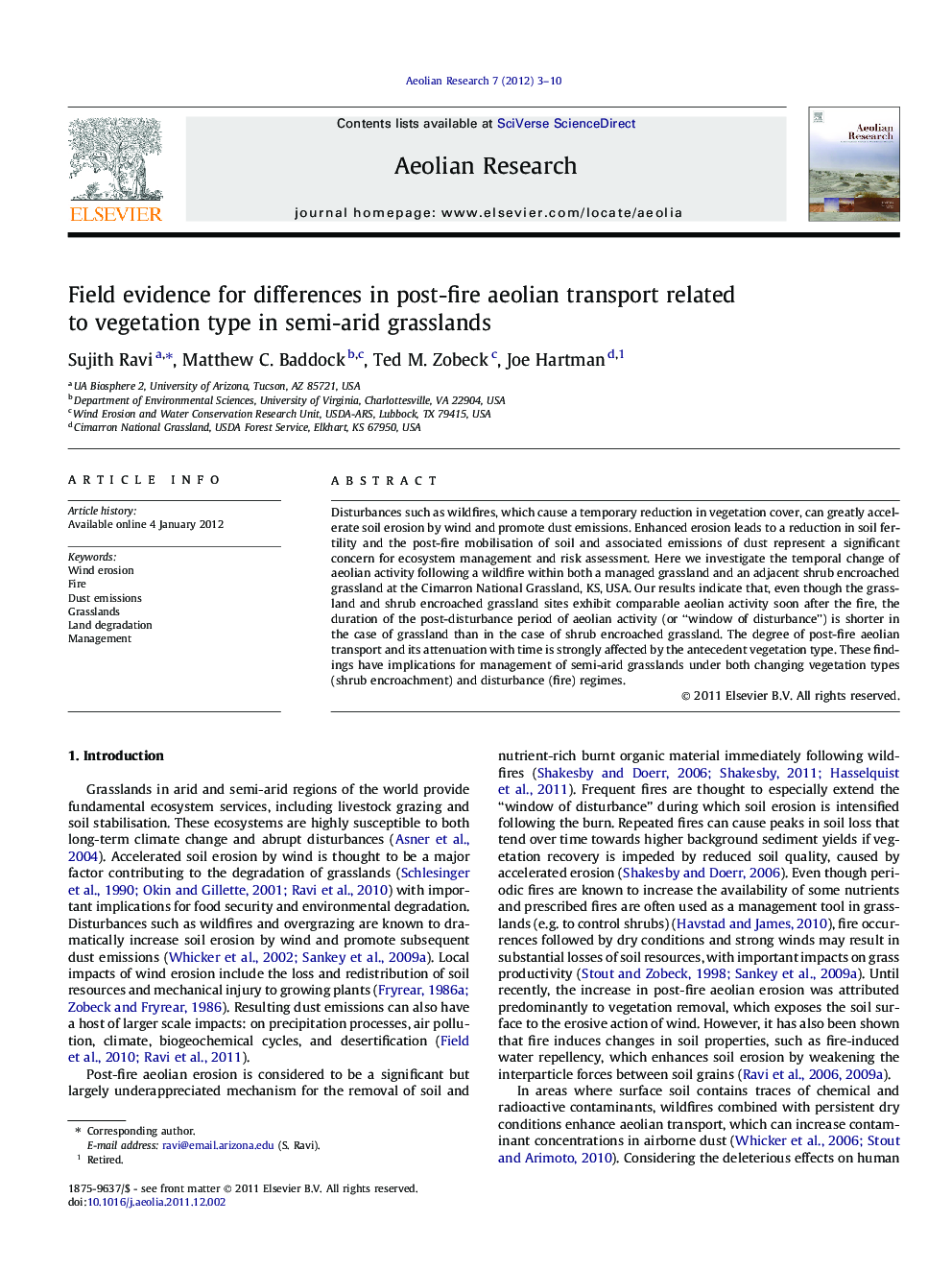| Article ID | Journal | Published Year | Pages | File Type |
|---|---|---|---|---|
| 4673889 | Aeolian Research | 2012 | 8 Pages |
Abstract
Disturbances such as wildfires, which cause a temporary reduction in vegetation cover, can greatly accelerate soil erosion by wind and promote dust emissions. Enhanced erosion leads to a reduction in soil fertility and the post-fire mobilisation of soil and associated emissions of dust represent a significant concern for ecosystem management and risk assessment. Here we investigate the temporal change of aeolian activity following a wildfire within both a managed grassland and an adjacent shrub encroached grassland at the Cimarron National Grassland, KS, USA. Our results indicate that, even though the grassland and shrub encroached grassland sites exhibit comparable aeolian activity soon after the fire, the duration of the post-disturbance period of aeolian activity (or “window of disturbance”) is shorter in the case of grassland than in the case of shrub encroached grassland. The degree of post-fire aeolian transport and its attenuation with time is strongly affected by the antecedent vegetation type. These findings have implications for management of semi-arid grasslands under both changing vegetation types (shrub encroachment) and disturbance (fire) regimes.
Related Topics
Physical Sciences and Engineering
Earth and Planetary Sciences
Atmospheric Science
Authors
Sujith Ravi, Matthew C. Baddock, Ted M. Zobeck, Joe Hartman,
